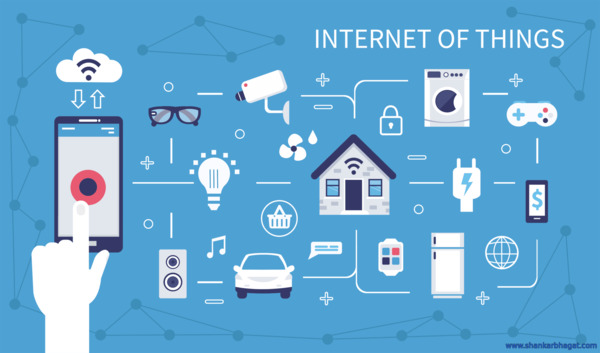Internet of Things (IoT)
The Internet of Things (IoT) refers to the interconnected network of physical devices embedded with sensors, software, and other technologies to enable communication and collect data with other devices and systems over the internet.
These devices range from ordinary household objects to sophisticated industrial tools.
We are most likely to use IoT devices in our day to day life.
Most common example is your Alexa device or your smart bulb or smart fan.

- The Thing is Internet of Things can be any of the below:
- A person - with a planted heart monitor
- An animal - with a chip or a trans-receiver
- A Vehicle with a sensor to detect pressure or speed
- Any Natural or artificial object that can transfer data over network
1. Devices and Sensors:
- Devices: Anything that can connect to the internet and collect or transmit data, such as smartphones, smartwatches, and home appliances.
- Sensors: Components that detect and measure physical properties (e.g., temperature, light, motion) and convert them into data.
2. Connectivity:
- Devices need to be connected to a network to communicate. This can be done through various communication protocols such as Wi-Fi, Bluetooth, Zigbee, and cellular networks.
3. Data Processing:
- Once data is collected, it needs to be processed. This can happen on the device itself (edge computing), or it can be sent to a central server or cloud for processing.
4. User Interface:
- Users interact with IoT devices through user interfaces, which can be apps on smartphones, web dashboards, or even voice commands.
1. Smart Homes:
- Smart Thermostats: Devices like the Nest thermostat learn user preferences and adjust the temperature automatically to save energy.
- Smart Lights: Lights that can be controlled remotely, scheduled, or adjusted based on occupancy and natural light levels.
- Security Systems: Cameras, smart locks, and motion detectors that can be monitored and controlled from anywhere.
2. Healthcare:
- Wearables: Devices like fitness trackers and smartwatches that monitor heart rate, activity levels, and sleep patterns.
- Remote Monitoring: Devices that allow healthcare providers to monitor patients' vital signs remotely.
3. Industrial IoT (IIoT):
- Predictive Maintenance: Sensors on machinery that predict failures before they happen, reducing downtime.
- Supply Chain Management: Tracking products through the manufacturing process and delivery to ensure efficiency and reduce waste.
4. Smart Cities:
- Traffic Management: Sensors and cameras that monitor traffic flow and adjust signals to reduce congestion.
- Environmental Monitoring: Sensors that track air quality, water quality, and noise levels to ensure a healthy environment.
5. Agriculture:
- Precision Farming: Sensors that monitor soil conditions, weather, and crop health to optimize farming practices.
- Livestock Monitoring: Devices that track the health and location of livestock.
1. Security:
- With more devices connected to the internet, there is a higher risk of cyber-attacks. Ensuring that all devices have robust security measures is crucial.
2. Interoperability:
- Different devices and systems need to work together seamlessly. Standardizing communication protocols and data formats is a challenge.
3. Data Privacy:
- IoT devices collect vast amounts of data, raising concerns about how this data is used and who has access to it.
4. Scalability:
- As the number of connected devices grows, the infrastructure needs to support the increased data traffic and processing requirements.
1. 5G Networks:
- The rollout of 5G will enable faster and more reliable connectivity for IoT devices, facilitating real-time data exchange and processing.
2. Edge Computing:
- Processing data closer to where it is generated (at the "edge" of the network) will reduce latency and bandwidth usage.
3. AI Integration:
- Integrating AI with IoT can enhance decision-making processes, automate more complex tasks, and provide deeper insights from data.
4. Expansion into New Areas:
- IoT is expected to continue expanding into new sectors, including retail, logistics, and energy management.
|  TRACERT command in Windows Command Line
TRACERT command in Windows Command Line  How to handle Criticism at work? An Insight by Mark Goulston (Harvard's Business review article)
How to handle Criticism at work? An Insight by Mark Goulston (Harvard's Business review article) 